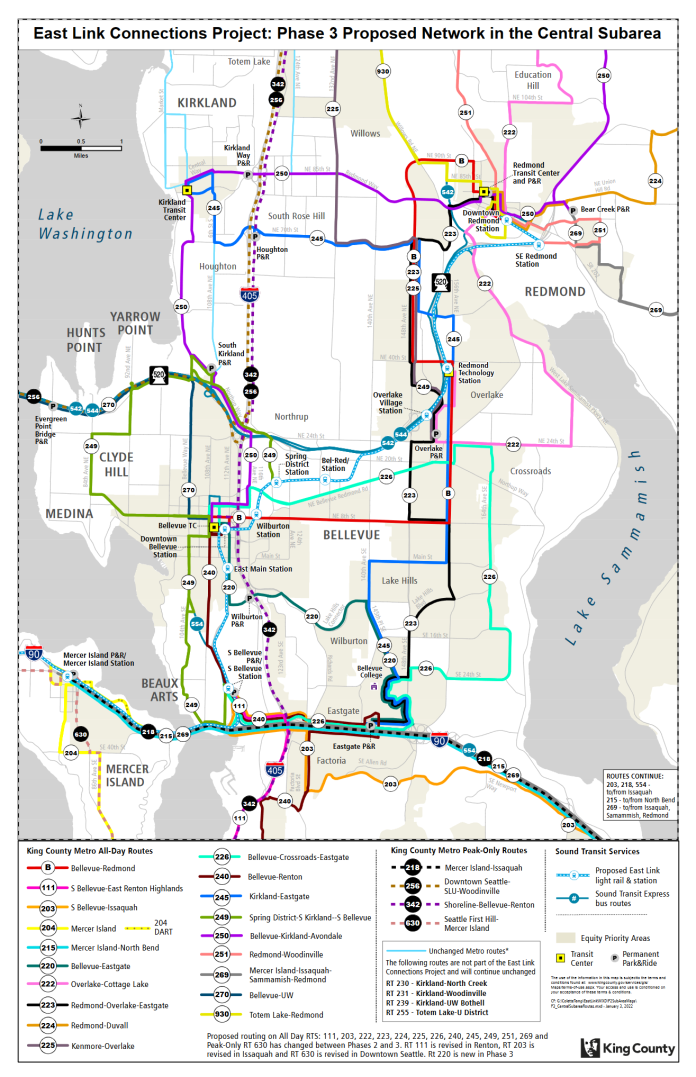
In a week full of big transportation news, King County Metro and Sound Transit have added to the pile by releasing their updated network proposals for Eastside bus service. Part of the East Link Connections process, these proposed changes to bus routes and service frequencies are meant to help the region’s transit network better sync with East Link light rail, slated to open in 2023.
The current draft plan, defined as Phase 3 of the agencies’ public outreach, has some significant changes from the network proposal released to residents several months ago. Responding to public feedback, planners sought to reduce the number of routes in order to increase frequencies on others, while rerouting portions of certain proposed lines to fill in most of the gaps that emerged. Transit riders can continue to provide feedback on the Phase 3 proposals via the agencies’ public engagement website through March 7th, so there’s still time to weigh in on the plans illustrated here. You can also attend one of the upcoming East Link Connections information sessions scheduled for February 17th and February 26th.
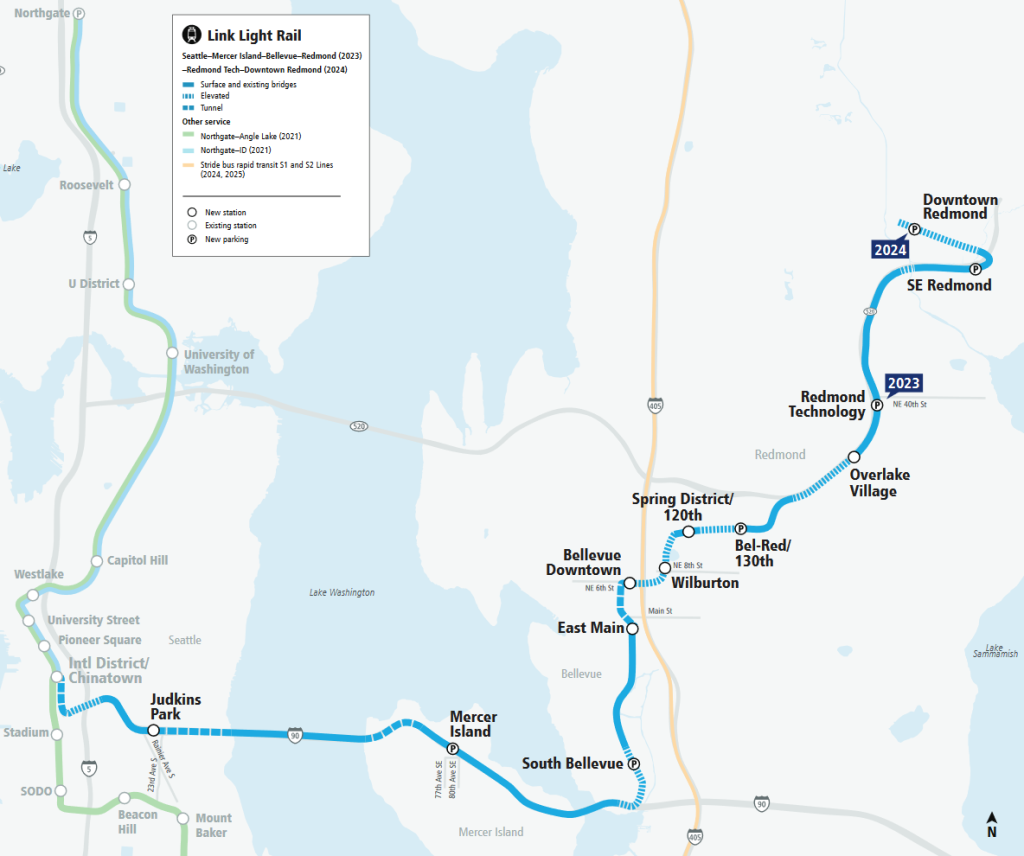
Such a significant overhaul of a region’s transit network (over 40 existing bus routes will be affected by these changes!) is invariably going to result in some winners and losers. Many one-seat trips will now become two seaters, and old bus lines will disappear to make way for new ones (I’ll miss you, Route 271). However, the goal of the restructure is to optimally utilize the mobility freedom that light rail provides: rapid, frequent, and traffic-free connections that free up transit resources to be used in other parts of the network to improve the reliability of the overall system.
Still, the agencies are seeking your feedback for anything they might’ve missed. Affected riders and residents can provide comments on the system as a whole or on particular routes. Since The Urbanist has already published an extensive dive into the differences between the Phase 2 proposals from several months ago and existing Eastside bus service, I’ll focus here exclusively on differences between the Phase 2 and Phase 3 proposals.
For clarity and consistency, I’ve mostly organized proposed changes using the subregions that the agencies have used during their planning process. It can be difficult to follow along with all the changes though, so feel free to examine them yourself via the public outreach portal: check the boxes for the subregions you’re interested in, then click through to examine changes to individual routes or view system maps by subregion.
Central Subarea: Route 202 and 241 removed; Routes 203 and 240 see changes; new Route 220 for Lake Hills
Transit resources are a tradeoff between space and time. With a limited number of drivers and coaches, planners must balance the competing interests of having more routes that cover multiple areas (space) with devoting resources towards improving frequency and reliability along fewer routes (time). The Phase 3 network for the central subarea seems to have slightly favored the latter, as Routes 202 and 241 have been removed in favor of adding more resources to other routes. Route 202 was a new route introduced in Phase 2 of outreach that would have provided local service between Downtown Bellevue and Issaquah via Eastgate and Woodridge. However, it followed a roughly similar path to the new Route 203, which travels between South Bellevue Station and Issaquah via SE Newport Way.
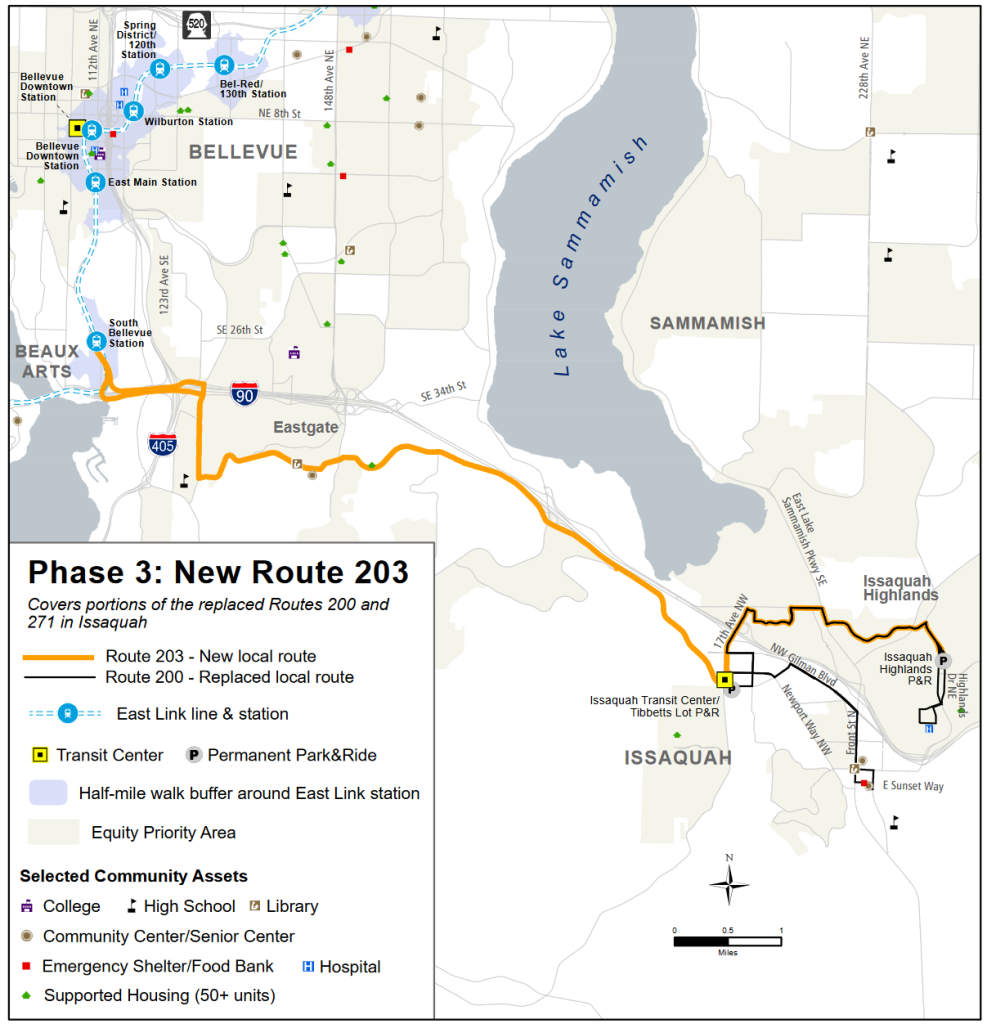
Since Route 202 was planned as a weekday-only route with hour-long gaps between arrivals at midday, planners likely thought resources could be better spent beefing up frequencies on other lines. Similarly, Route 241 is an existing route that had been maintained with slight modifications in Phase 2 but is now slated for removal. Perhaps its most important function was to connect Factoria with both Downtown Bellevue and Eastgate, but both of those functions have been replaced with a creative rerouting of Route 240. Instead of serving Lake Hills via the alignment of the current Route 271, the 240 will now travel along Bellevue Way to South Bellevue Station, where it turns east to serve Eastgate Park & Ride before finally turning back west to serve Factoria and continue along its present routing. It will also now have 15-minute arrivals from 5:00am to 7:00pm every weekday.
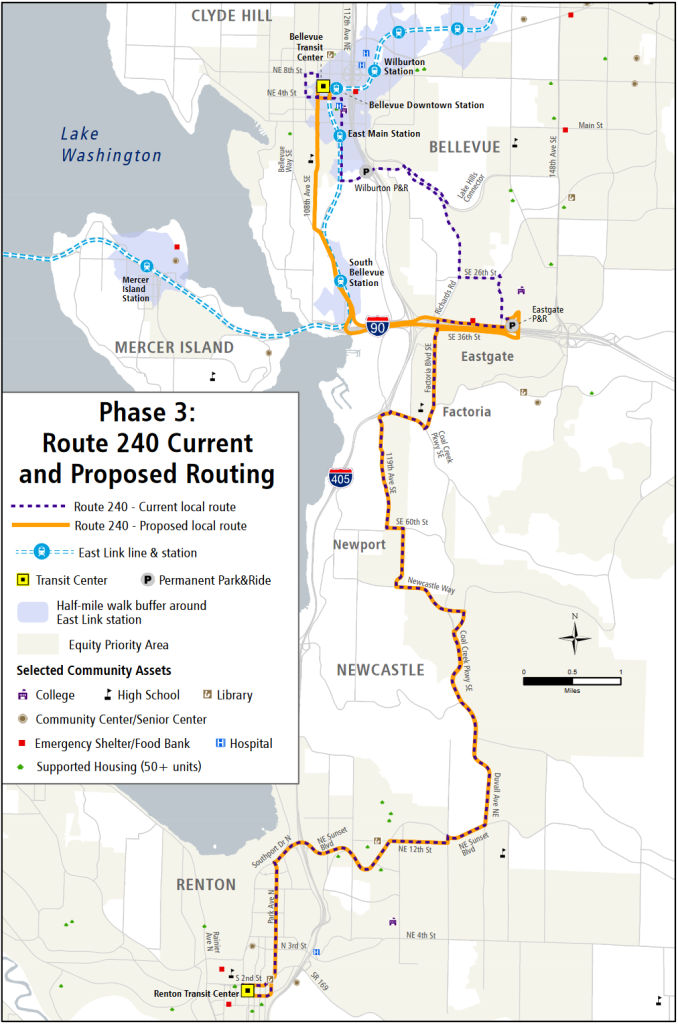
In Phase 2, Route 240 was the chosen route to provide connections for Lake Hills residents to Downtown Bellevue and Eastgate, but service frequencies were planned to be less than what Route 271 currently provides. New to Phase 3, Route 220 is meant to address both the frequency issue and the hole left by the new rerouting of the 240. With 15-minute frequency between Downtown Bellevue and Eastgate during daylight hours, this new route will bring arrivals closer to current levels while providing riders a new connection to East Main light rail station.
Central Subarea: Route 245 back on original route; shifts for Routes 226, 249, and 554; increased frequency for Route 222
With the RapidRide B Line now slated to follow a more direct route along 156th Avenue NE instead of serving the Overlake Village area, planners in Phase 2 had suggested a reroute of Route 245 via NE 24th Street and 152nd Avenue NE, then continuing northward along 148th Avenue NE. Responding to feedback about the loss of service on 156th Avenue NE, the Phase 3 proposal for Route 245 sees a return to the current routing. However, this means that neither the B Line nor Route 245 will serve Overlake Village Station. Route 222 (with its additional mid-day frequency in Phase 3) and a newly diverted Route 225 will aim to pick up the slack, but since each route will only have 30-minute arrivals at peak hours, that looks to be a heavy lift.
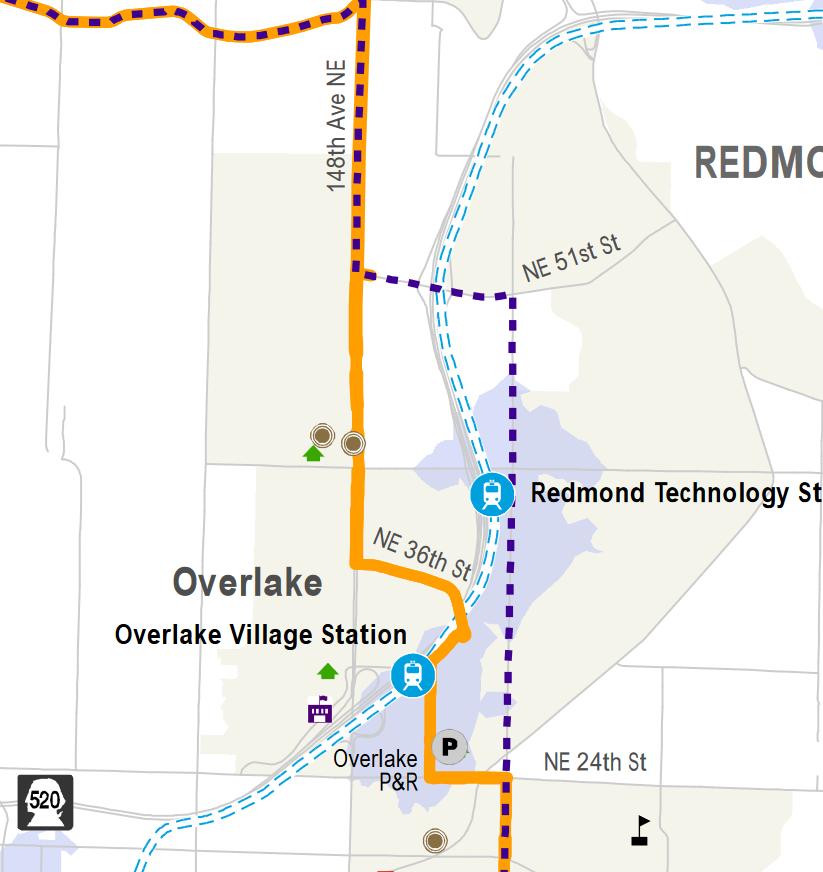
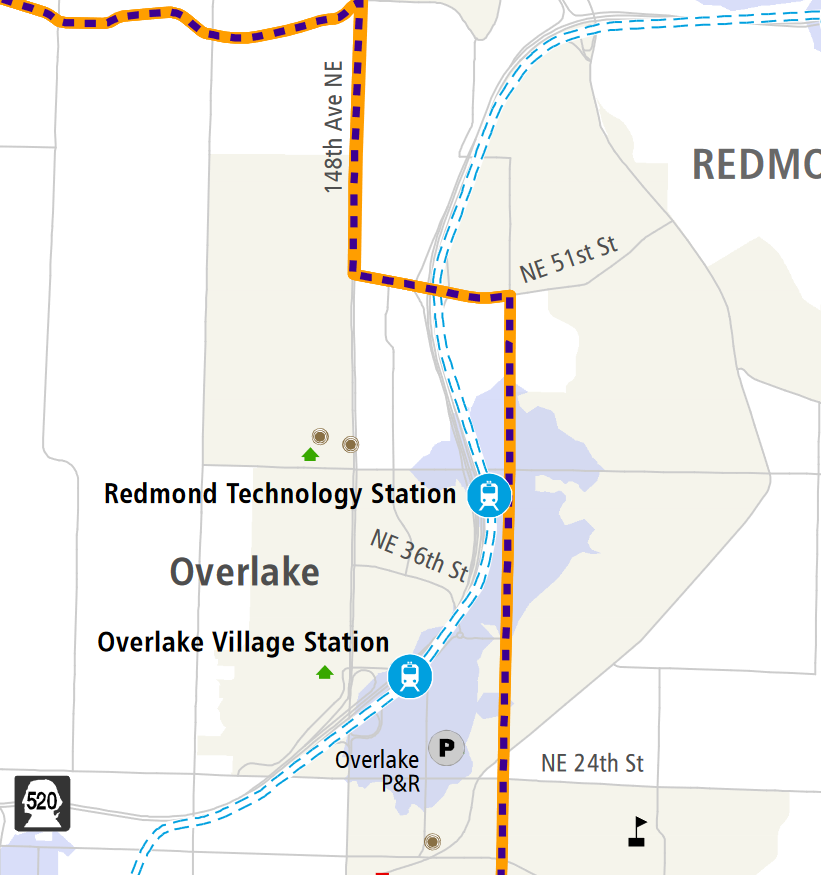
Most of the remaining routes in the Central subarea saw relatively minor changes compared to their Phase 2 iterations. Routing was slightly changed for Route 226 so that it maintains its direct service to Interlake High School and Bellevue Technology Center. Sound Transit’s Route 554 serves a slightly different route when it reaches Issaquah, traveling along Gilman Boulevard in its Phase 3 plan instead of along Newport Way. Most significantly, the Phase 3 plan sees the truncation of Route 249 by about a third of its previous length: instead of terminating at the Redmond Technology Station, riders would disembark at Spring District/120th Avenue Station. Routing in Medina was also shifted westward to serve 84th Avenue NE instead of 92nd Avenue NE as planned in Phase 2.
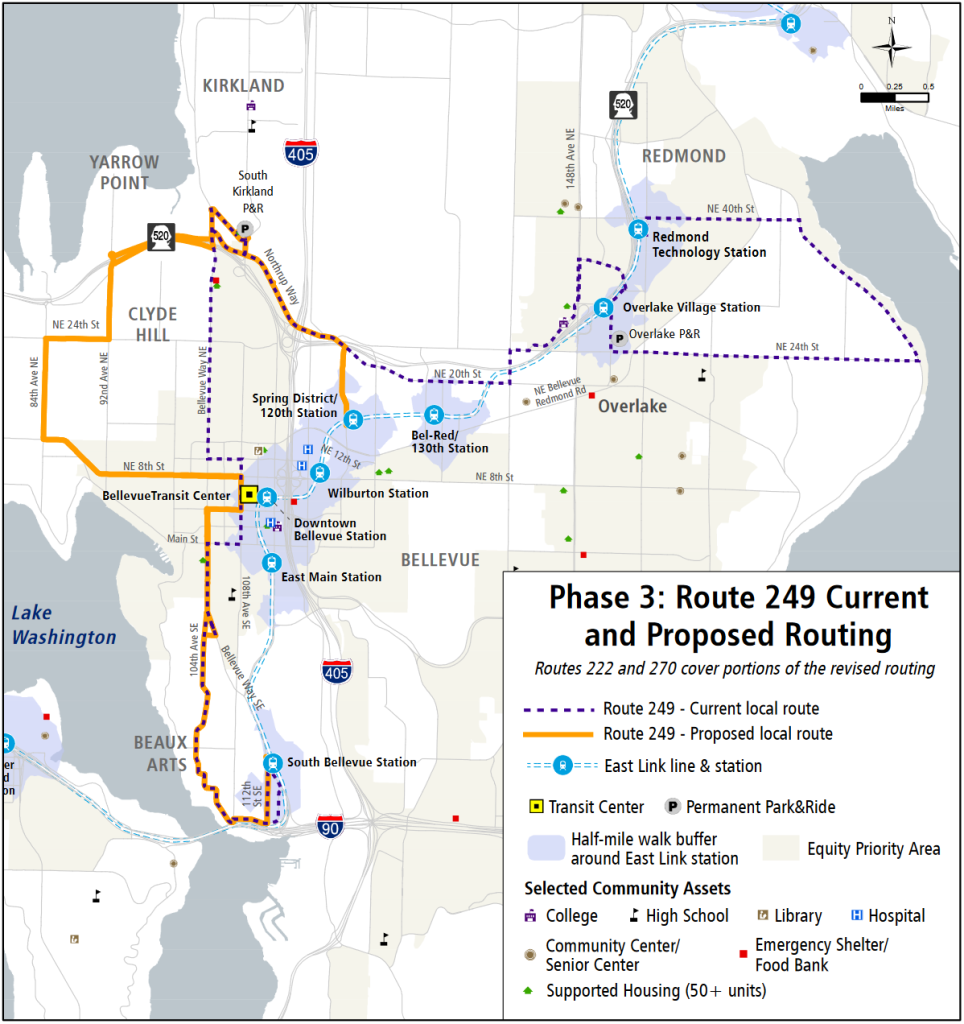
North Subarea: Sunday DART Service and minor routing shifts
The most significant changes for routes in the North subarea are coming to Route 223, a route introduced in Phase 2 to connect Eastgate to Redmond Technology Station via Northeast Bellevue. In its Phase 3 iteration, riders would bypass Northeast Bellevue and Redmond Technology Station, instead traveling via 148th Avenue NE to the Redmond Transit Center (and in 2024, Redmond Downtown Station).
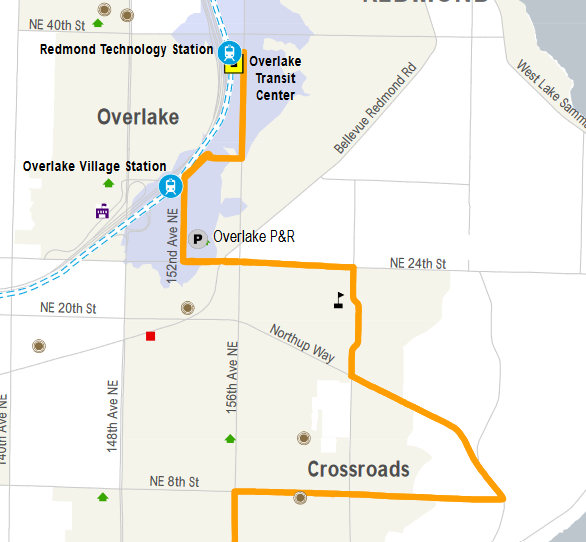
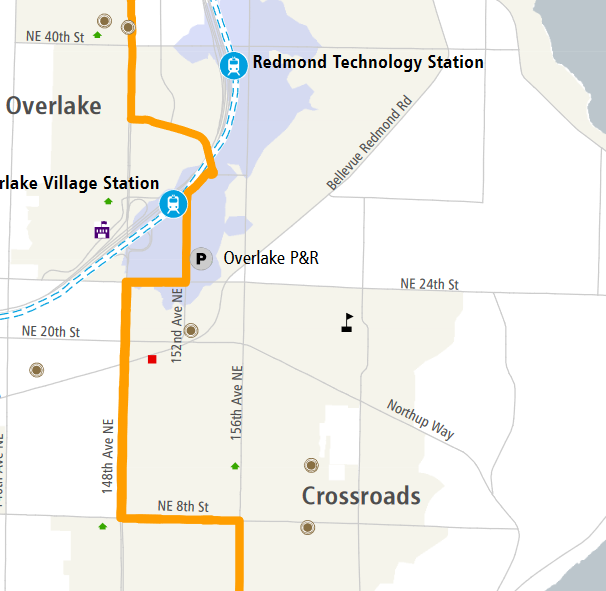
Other routing changes in this area were relatively minor. Route 224’s Phase 3 routing would have it travel down NE Union Hill Road instead of Avondale Way NE in Redmond. Route 225, as alluded to previously, is now slated to connect northern Kirkland and Kenmore with the Overlake Village Station instead of Redmond Technology Station. And Route 251 was slightly altered to more directly serve Bear Creek Park and Ride in Redmond, but its weekday midday and nighttime frequencies have been reduced from every 30 minutes to every 60 minutes. On the flip side, DART users might be happy to hear that Route 930 will have Sunday daytime service connecting Redmond with Totem Lake.
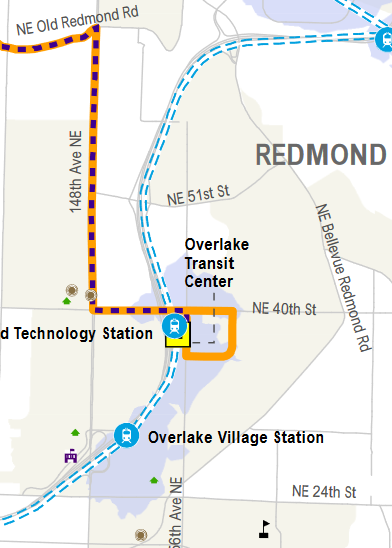
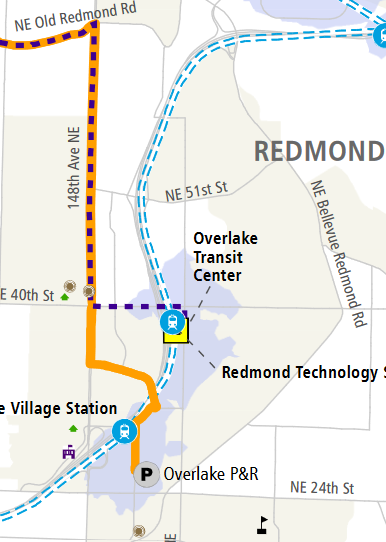
South and East Subareas to remain mostly the same
Route changes in these subareas were relatively minor. Route 111, which would connect eastern Renton to South Bellevue Station, has seen both a slight route change (to better serve upcoming development in the Renton Highlands) and a schedule extension (to serve riders until 9:00pm on weekdays instead of 8:00pm). Route 269 benefits from the Phase 3 reroute of Route 203 in Issaquah; because Route 203 has been modified to provide more local service along NW Sammamish Road, Route 269 is able to more directly serve the Issaquah Highlands Park & Ride by staying on I-90 for longer. And Route 630, a shuttle service meant to provide connections between Mercer Island and Seattle hospitals, has been streamlined in the downtown area.
After the call for public feedback closes on March 7th, King County Metro and Sound Transit will lead meetings with the East Link Mobility Board, a body composed of local residents and riders, to further tweak the network. Final approval of the plan is slated for later this year after suggestions are signed off on by King County Council and Sound Transit receives the green light from its board of directors to proceed ahead.
With more light rail expansion coming in the next few years, agencies are already starting work on significant bus network restructures in other areas. Residents in Shoreline and Lynnwood can apply to be on that region’s mobility board, which is set to start meetings later this year. As a paid outreach opportunity, it gives riders a great way to provide input and make sure transit network system adjustments are started with community priorities in mind. Although it’s impossible to make everybody happy in this process, it’s hard not to be excited for the role that expanded light rail will have in improving the quality and reliability of our entire regional transit system — so make sure you take the time to have your say.
Chris Randels is the founder and director of Complete Streets Bellevue, an advocacy organization looking to make it easier for people to get around Bellevue without a car. Chris lived in the Lake Hills neighborhood for nearly a decade and cares about reducing emissions and improving safety in the Eastside's largest city.

